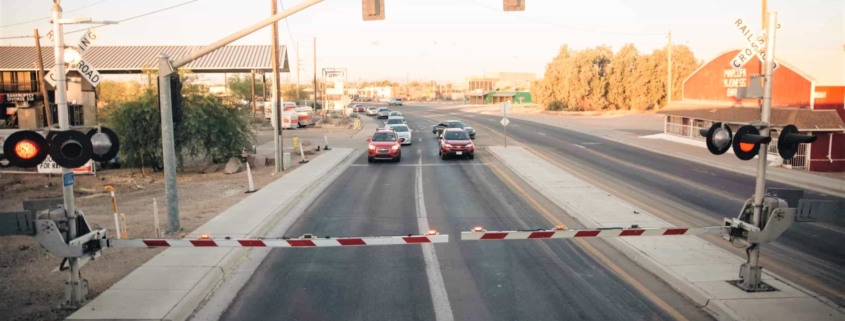Railroad Crossings Without Flashing Lights Are Dangerous
Flashing lights and gates are the best warnings to keep vehicles off railroad tracks. Who decides what to put at these crossings? The train companies have interest in keeping vehicles off their tracks when trains are coming. in a railroad crossing accident. But, instead of using the best warnings, they turn to federal law to protect them from liability if they strike a car or truck. They say the federal government gave us money to and we used it wisely. You cannot sue us because federal law says you can’t. This is not exactly true.
Yes, there is a rule of law that if the federal government provided funds for warnings at these intersections, those who were not warned cannot claim there should have been flashing lights and gates- i.e those type claims are preempted by federal law. Railroad companies have been very successful with this defense in Alabama. The railroad companies get state employees to sign affidavits that federal funds were used at all intersections in the state. That does not answer the question of whether they were used at a particular crossing
We represented a passenger in a truck which was struck by a train. Our client suffered closed head injuries and does not remember the wreck. The driver testified that another train was stationary on a parallel track and blocked his view. He stopped at the cross-buck warning and then tried to look around the parked train. By the time he saw the train coning it was too late. CRASH! What if there had been flashing lights and gates? The truck never would have gotten on the track. No truck- no wreck- no unnecessarily injured young man. Flashing lights and gates are the best protection to keep vehicles off tracks when trains which cannot stop are coming to an intersection. Installing these safety devices cost money and money spent cuts into the railroad’s profits.
Affidavits were filed. Instead of accepting the affidavits in our case, our co-counsel, Bob Pottroff took the depositions of finance and safety crossing personnel at the department of transportation. After all the records in that department involving federal money for warnings were reviewed by them, the testimony was there nothing to indicate that federal funds were actually used at the crossing where this wreck occurred. The crossing where there were no lights or gates. The railroad has to prove that the federal money was used at the intersection in question. They were unable to do it. General assertions are not sufficient in a court of law. The trial judge denied their summary motion to dismiss the case. The case was later settled for a confidential amount.
And how what can a passenger do if there aren’t adequate warnings? Nothing. It is the railroad that should have to compensate those injured or killed at these crossings. They should be required to put up lights and gates. What is more important- a train load of coal or human life?



Leave a Reply
Want to join the discussion?Feel free to contribute!